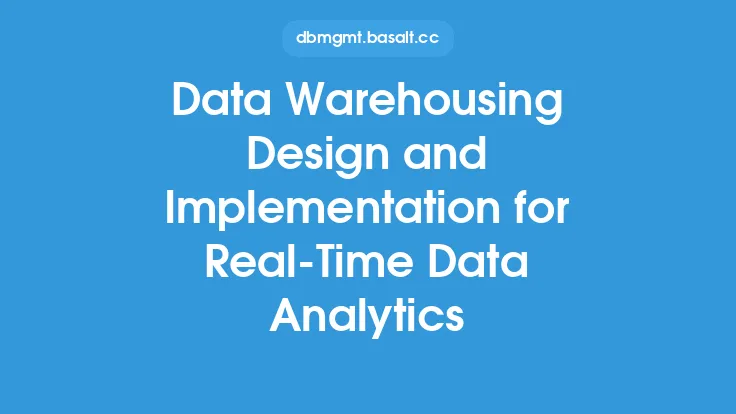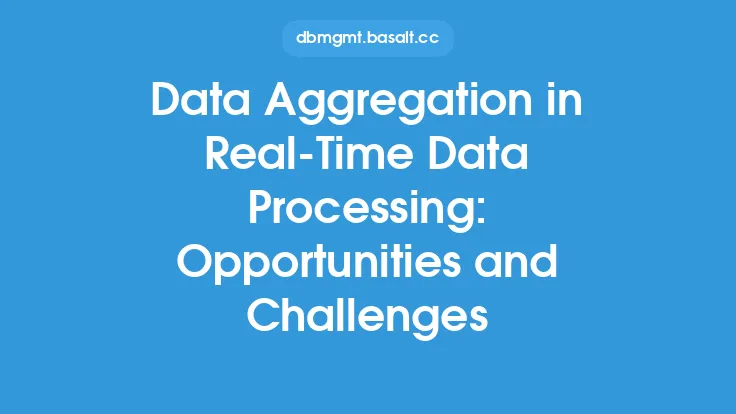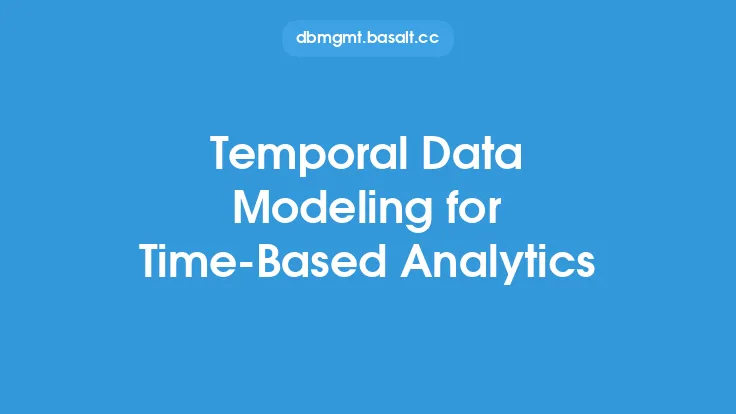The ability to process and analyze large volumes of data in real-time has become a crucial aspect of modern data-driven applications. Big data modeling plays a vital role in enabling real-time data processing by providing a framework for designing and implementing scalable, efficient, and flexible data systems. In this article, we will delve into the world of big data modeling for real-time data processing, exploring the concepts, techniques, and best practices that underpin this critical aspect of data modeling.
Introduction to Real-Time Data Processing
Real-time data processing refers to the ability to process and analyze data as it is generated, without significant delay. This enables organizations to respond quickly to changing conditions, make informed decisions, and gain a competitive edge. Real-time data processing is critical in various applications, such as financial trading, IoT sensor data processing, and social media analytics. To achieve real-time data processing, big data modeling must be designed to handle high volumes, velocities, and varieties of data, while ensuring low latency and high throughput.
Key Concepts in Big Data Modeling for Real-Time Data Processing
Several key concepts are essential in big data modeling for real-time data processing. These include:
- Data Ingestion: The process of collecting and transporting data from various sources into a centralized system for processing and analysis.
- Data Streaming: The continuous flow of data from sources such as sensors, social media, or applications, which must be processed in real-time.
- Event-Driven Architecture: A design pattern that focuses on producing, processing, and reacting to events, such as changes in data or system states.
- In-Memory Computing: The use of RAM to store and process data, reducing latency and increasing performance.
- Distributed Computing: The use of multiple nodes or machines to process data in parallel, increasing scalability and throughput.
Data Modeling Techniques for Real-Time Data Processing
Several data modeling techniques are used to support real-time data processing. These include:
- Entity-Attribute-Value (EAV) Modeling: A flexible data modeling approach that stores data as a set of entities, attributes, and values, enabling efficient handling of large volumes of data.
- Graph Modeling: A data modeling approach that represents data as a graph, consisting of nodes and edges, enabling efficient querying and analysis of complex relationships.
- Time-Series Modeling: A data modeling approach that stores data as a series of time-stamped values, enabling efficient analysis of temporal data.
- Column-Family Modeling: A data modeling approach that stores data in columns instead of rows, enabling efficient querying and analysis of large datasets.
Data Storage and Management for Real-Time Data Processing
Big data modeling for real-time data processing requires efficient data storage and management systems. These include:
- NoSQL Databases: Databases designed to handle large volumes of unstructured or semi-structured data, such as key-value stores, document-oriented databases, and graph databases.
- In-Memory Data Grids: Distributed systems that store data in RAM, enabling low-latency and high-throughput data processing.
- Distributed File Systems: File systems that store data across multiple nodes or machines, enabling scalable and fault-tolerant data storage.
Real-Time Data Processing Frameworks and Tools
Several frameworks and tools are available to support big data modeling for real-time data processing. These include:
- Apache Kafka: A distributed streaming platform that enables real-time data processing and event-driven architecture.
- Apache Storm: A distributed real-time processing system that enables low-latency and high-throughput data processing.
- Apache Flink: A distributed processing engine that enables real-time data processing and event-time processing.
- Apache Cassandra: A NoSQL database designed for handling large volumes of distributed data, enabling scalable and fault-tolerant data storage.
Best Practices for Big Data Modeling for Real-Time Data Processing
To ensure successful big data modeling for real-time data processing, several best practices must be followed. These include:
- Define Clear Requirements: Clearly define the requirements for real-time data processing, including latency, throughput, and data volume.
- Choose the Right Data Model: Select a data model that supports real-time data processing, such as EAV, graph, or time-series modeling.
- Design for Scalability: Design the data system to scale horizontally, enabling increased throughput and reduced latency.
- Implement Data Governance: Implement data governance policies and procedures to ensure data quality, security, and compliance.
- Monitor and Optimize: Continuously monitor and optimize the data system to ensure optimal performance and efficiency.
Conclusion
Big data modeling for real-time data processing is a critical aspect of modern data-driven applications. By understanding the key concepts, techniques, and best practices outlined in this article, organizations can design and implement scalable, efficient, and flexible data systems that support real-time data processing. As the volume, velocity, and variety of data continue to increase, the importance of big data modeling for real-time data processing will only continue to grow, enabling organizations to respond quickly to changing conditions and gain a competitive edge in the market.





